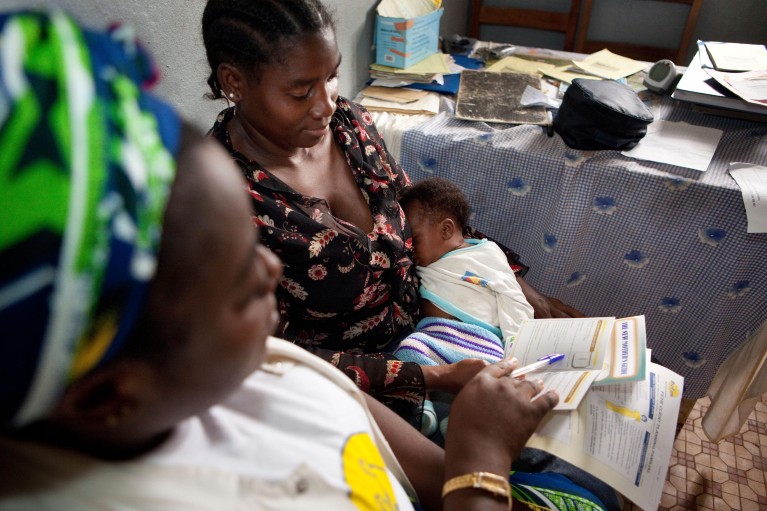
A midwife discusses birth control options with a patient at a reproductive health clinic in Yaounde, Cameroon, West Africa.CREDIT: Jake Lyell / Alamy Stock Photo
Sub-Sahara African countries are failing to reduce child mortality, thwarted by poor access to contraception, limited access to quality health care, female illiteracy, and a lack of clean safe water, reveals analysis on datasets from multiple countries.
The study, published in PLOS Global Public Health1 says the continent’s Sustainable Development Goal (SDG) 3.2 target to reduce under five deaths to 25 per 1000 may be out of reach unless urgent measures are taken to combat these challenges. The study shows that the highest mortality rates are in West and Central Africa. The data from 54 African countries shows only 8 countries (mainly in North Africa) have significantly reduced under five mortality rates to 25 deaths per 1,000 live births or less.
The researchers, from Nigeria and the UK, used supervised machine learning to analyse the relationship between child mortality and factors like contraceptive prevalence, use of skilled birth attendants, and female secondary school completion. It show that increasing these health factors can significantly improve the probability of achieving the Sustainable Development Goal target for under-5 mortality rate in African countries.
“If appropriate investments are not made, many countries in Africa may not achieve this target,” says Sunday Adedini, the study’s lead author and associate professor of health demographics at Nigeria’s Federal University Oye-Ekiti.
Adedini told Nature Africa that there’s an urgent need for interventions to address the situation and “many countries, particularly across West and Central Africa need to make increased investments in girl-child.”
